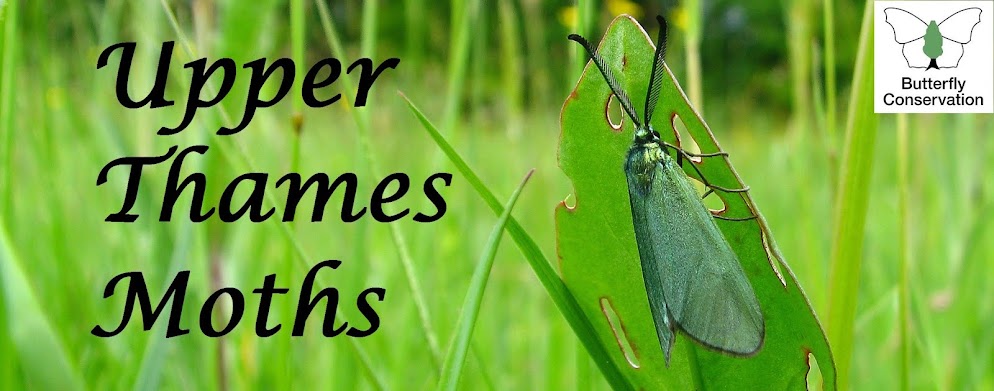It looks like a passable start to July in Wolvercote, Oxon, and I'm trying to catch up on ID and data entry as far as possible before the hot spell kicks in. Before a number of ID uncertainties, a few general remarks and notable species: the trend for species to appear quite early is continuing, with our first Dun-bar (already identified as marking the beginning of the end of the peak mothing season) showing up on 11th July (19th July in 2013), and our first Old Lady on the 15th (11th August last year). The overall impression is that numbers aren't huge, although certain individual species are quite plentiful - Uncertain, Buff Ermine and
Chrysoteuchia culmella all fairly predictably among those.
We've had some nice garden firsts, including a Least Carpet, which the Moth Bible implies is comparatively rare:
 |
| Least Carpet, 13/7/14 |
Also nice to see our first ever Bordered Sallow, Vapourer and Myelois circumvoluta (Thistle Ermine) in recent days.



,+11.7.14.JPG)
.JPG)
Hi Steve/Xander - Least Carpet is one of those moths that used to be quite scarce but has expanded its range. I seem to remember Martin Albertini telling me that on some days it was one of the commonest species at his rothamsted traps (I hope that I've remembered that correctly)
ReplyDeleteRegarding rarity of Least Carpet. It is now widespread in Bucks and at the Burnham Beeches Rothamsted trap it has taken about 8 years to become one of the commonest moth. The recent review of the Rothamsted data countrywide shows it to have increased massively.
ReplyDeleteMartin Albertini, Bucks moth recorder
Ah, one of those (a bit like Toadflax Brocade). I had the impression from the Book that it might not have reached Oxfordshire in numbers yet, but clearly it's nothing very out of the ordinary.
ReplyDelete